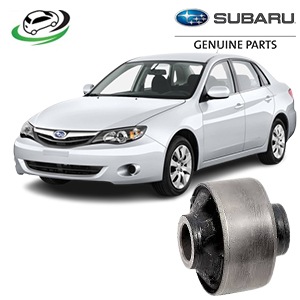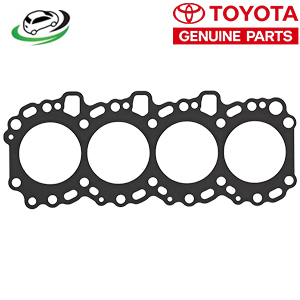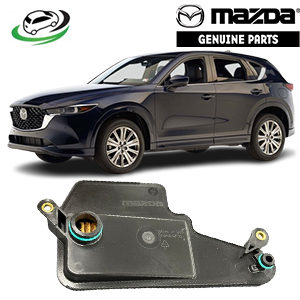-10%
Get Mazda CX-5 2013-2024 Automatic Transmission Filter Strainer FZ01-21-500
An automatic transmission filter strainer is a crucial component in vehicles equipped with automatic transmission systems. It plays a vital role in maintaining the efficiency and longevity of the transmission by filtering out contaminants from the transmission fluid. In this comprehensive explanation, we’ll explore the functions, benefits, types, maintenance tips, and signs of a faulty automatic transmission filter strainer.
1. Function of an Automatic Transmission Filter Strainer
The primary function of the automatic transmission filter strainer is to ensure that the transmission fluid remains free from impurities. Transmission fluid is the lifeblood of the transmission system, responsible for lubrication, cooling, and operating hydraulic components that shift gears. The filter strainer helps by:
- Filtering Contaminants: The transmission system generates tiny metal particles due to wear and tear as the gears engage. The filter traps these particles, as well as any dirt, clutch material, or other debris, preventing them from entering the delicate hydraulic system.
- Maintaining Clean Fluid Flow: A clean transmission filter allows the fluid to flow freely within the transmission system, ensuring smooth gear changes and preventing slippage.
- Protecting Sensitive Components: Automatic transmissions are composed of intricate components like valves, sensors, and gears, which are sensitive to dirt and contaminants. The filter acts as a barrier, protecting these components from damage caused by unfiltered transmission fluid.
2. Benefits of an Automatic Transmission Filter Strainer
An automatic transmission filter strainer offers several benefits that contribute to the overall health and performance of the transmission system. Some of these advantages include:
- Enhanced Transmission Lifespan: By filtering out contaminants, the filter reduces the likelihood of wear and damage to the transmission’s internal components. This leads to a longer transmission lifespan and fewer costly repairs.
- Improved Gear Shifting: A well-maintained filter ensures that the transmission fluid flows smoothly, facilitating precise and smooth gear shifts. This can enhance the overall driving experience and prevent issues like gear slippage or hard shifts.
- Preventing Overheating: Clean transmission fluid helps regulate the temperature of the transmission system by dissipating heat. A clogged filter restricts fluid flow, leading to overheating, which can cause premature transmission failure.
- Reduced Maintenance Costs: Replacing or maintaining the filter is much more affordable than repairing or replacing the entire transmission. A functioning filter can help avoid extensive damage, reducing maintenance costs in the long run.
- Better Fuel Efficiency: A transmission operating efficiently due to a clean filter can help improve fuel efficiency. A clogged filter can strain the transmission, leading to more fuel consumption.
3. Types of Automatic Transmission Filter Strainers
There are different types of transmission filters, each designed to suit specific vehicle makes and transmission systems:
- Screen Filters: These filters use a fine metal mesh to trap large particles. Screen filters are often found in older transmission systems. While durable, they are less effective at trapping finer particles.
- Paper Element Filters: These filters use a paper material to trap contaminants. Paper filters are highly effective at trapping fine particles, but they need to be replaced more frequently as the material can degrade over time.
- Sintered Metal Filters: Made from powdered metal fused together, sintered filters are highly durable and efficient at filtering both large and fine particles. They offer longevity and are more common in modern vehicles.
- Magnetic Filters: Some filters incorporate magnets to trap metallic debris, which is especially useful in transmission systems prone to generating metal particles. The combination of a filter element and magnets provides comprehensive filtration.
The choice of filter depends on the vehicle manufacturer’s specifications and the type of transmission fluid used.
4. Maintenance Tips for Automatic Transmission Filter Strainers
Regular maintenance of the transmission filter is essential for ensuring the health of your vehicle’s transmission system. Below are some tips to help maintain the filter effectively:
- Regular Fluid and Filter Changes: The transmission fluid should be changed at recommended intervals, usually every 30,000 to 60,000 miles, depending on the vehicle’s make and model. When changing the fluid, it’s a good practice to replace the filter as well. Some vehicles may come with lifetime filters, but in most cases, periodic changes are necessary.
- Inspect for Leaks: Transmission fluid leaks can indicate a problem with the transmission system, and they often lead to low fluid levels, which can damage the transmission. If you notice a leak, it’s important to check the transmission pan, seals, and gaskets for damage.
- Monitor Fluid Quality: Dirty, dark-colored, or burnt-smelling transmission fluid is a sign that the filter isn’t working effectively, or the fluid is contaminated. In such cases, immediate inspection and replacement of the filter and fluid are necessary.
- Check Transmission Temperature: An overheating transmission can indicate restricted fluid flow due to a clogged filter. If your vehicle has a transmission temperature gauge, monitor it regularly. Overheating can lead to damage to the transmission components.
5. Signs of a Faulty Transmission Filter Strainer
Several symptoms may indicate that the transmission filter is clogged or malfunctioning:
- Difficulty Shifting Gears: A clogged filter can restrict fluid flow, leading to delayed or harsh gear shifts. If the transmission struggles to change gears, it’s a sign the filter may need attention.
- Slipping Gears: A dirty or blocked filter can result in low fluid pressure, causing the gears to slip. Gear slippage may lead to the transmission failing to engage properly, which could eventually cause major transmission damage.
- Noisy Transmission Operation: Whining or rattling noises from the transmission may suggest that the filter is clogged, and fluid is struggling to circulate. These noises are often more noticeable during gear changes.
- Overheating: An overheated transmission can be caused by a lack of proper fluid flow due to a clogged filter. If the transmission fluid can’t cool the system efficiently, it leads to overheating, which can cause the transmission to fail.
- Fluid Leaks: A damaged or worn-out transmission filter can lead to leaks in the transmission pan. If you notice fluid puddles under your vehicle, it may be time to inspect the filter and transmission system.
- Burnt Smell or Dark Fluid: A burning smell or dark, dirty fluid is often a sign that the transmission filter is no longer able to effectively filter contaminants. This requires immediate attention to avoid further damage.
6. Replacing the Automatic Transmission Filter Strainer
Replacing the transmission filter is a relatively straightforward process, although it requires some mechanical knowledge. The basic steps are:
- Draining the Transmission Fluid: The first step is to drain the old transmission fluid by removing the transmission pan.
- Removing the Old Filter: The filter is usually located inside the transmission pan. It is removed by unclipping or unscrewing it.
- Installing the New Filter: Once the old filter is removed, a new filter is installed in its place. It’s important to ensure that it is properly seated and sealed.
- Refilling the Transmission Fluid: After the filter is replaced, the transmission pan is reattached, and new transmission fluid is added to the system.
It’s advisable to consult the vehicle’s manual or a professional mechanic when performing this maintenance.
Conclusion
The automatic transmission filter strainer is a small but essential part of a vehicle’s transmission system. It ensures the transmission fluid remains clean, protecting the system from damage caused by contaminants. Regular maintenance, including changing the filter and fluid, can prevent major transmission issues and keep your vehicle running smoothly. Ignoring the signs of a failing filter can lead to costly repairs, so it’s essential to address problems early for the longevity and performance of the transmission.
Follow us on Facebook for more parts.






Reviews
Clear filtersThere are no reviews yet.